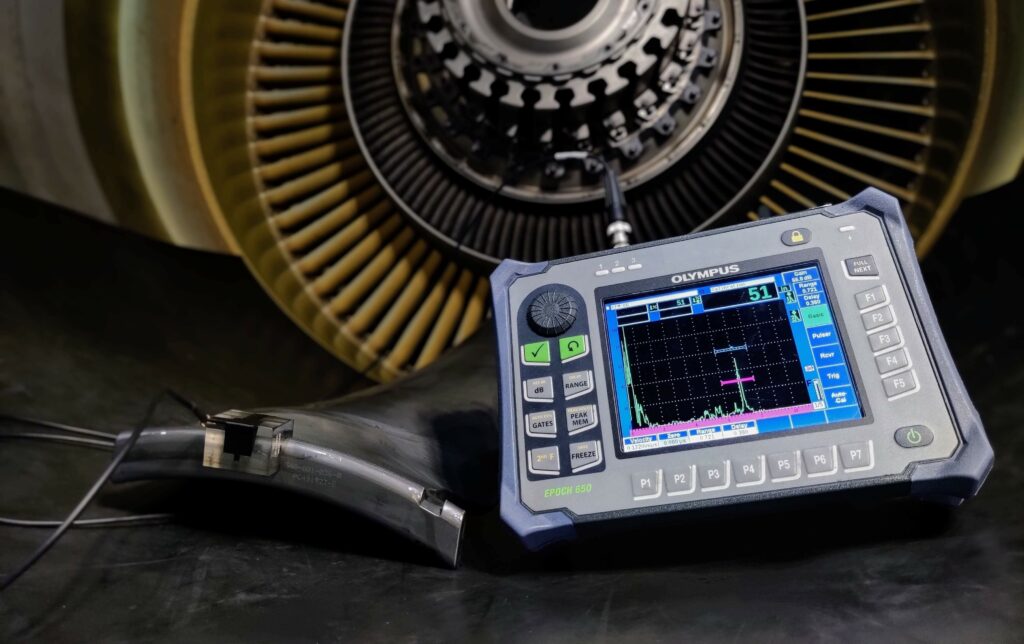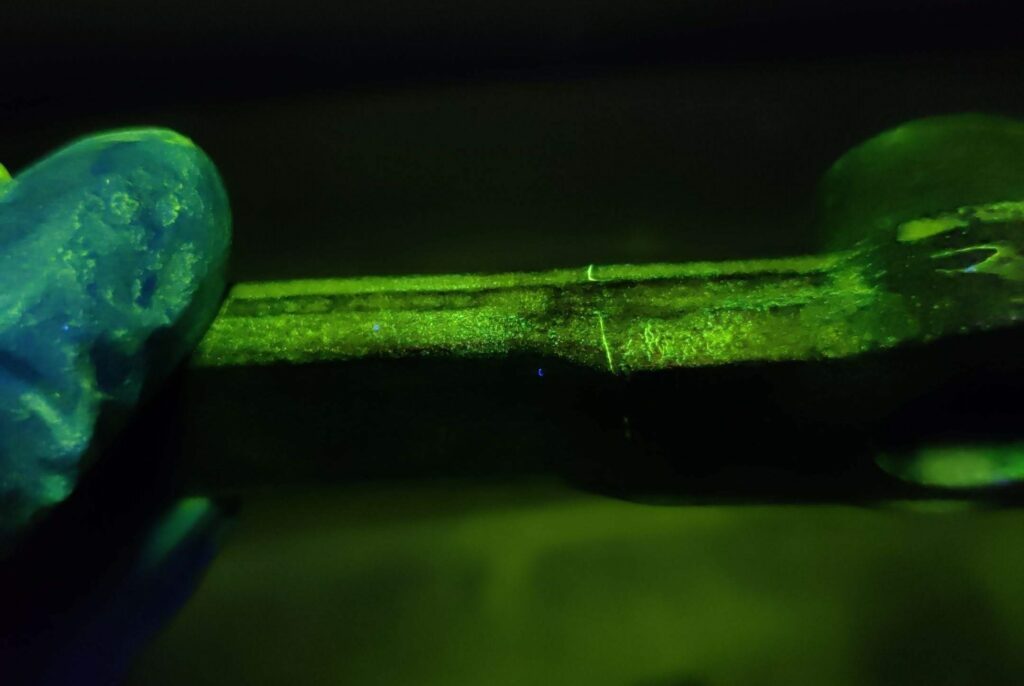Non-Destructive Testing (NDT) and its Role in Aircraft Maintenance

I was just over 19 years old when I embarked on my journey in the aviation industry as an apprentice mechanic. I was immediately struck by the figures wielding UV lights, conducting Non-Destructive Testing (NDT) under black cloth. With perseverance and a touch of luck, I delved into this trade, gradually climbing the ranks in various NDT methods. Eventually, I seized the opportunity to become a Level 3 advisor and establish a branch of a training school in Malta. This institution would later evolve into an NDT only Part-145 Organisation. This journey allowed me to delve deeper into the NDT world and hence, I felt it would be good to share some of my knowledge within an article. My idea for this first article is to demystify the world of NDT and shed light on the main challenges of this practice within Part-145 Organisations.
Background
For those who might be unfamiliar, Non-Destructive Testing is similar to visiting a clinic for a health check after an accident. You won’t undergo surgery, where they open you up, examine your insides, and then stitch you back together. Instead, the medical team might use non-invasive methods like ultrasounds, X-rays, or MRI scans to get a look at what’s going on inside you, all without a single incision. At most, you might lose a few hairs to the trimmer. This is where the “Non Destructive” part comes in.
In the engineering world, NDT follows the same principle. It’s all about assessing parts or materials without making any changes to their surface or inner structure. Think of it as a kind of detective work that helps us inspect and understand objects without altering them. NDT employs various methods, each with its unique strengths and limitations, which we’ll delve into shortly.
NDT’s roots run deep in history, with evidence of ancient civilizations using oil and chalk to reveal natural cracks in marble quarries. In the aviation industry, the adoption of NDT was initially limited, but its prominence surged following incidents such as Aloha Airlines Flight 243.
It became apparent that airframes and components are susceptible to both stress and fatigue. Detecting defects while they are small and seemingly inconsequential is crucial. NDT came to light to save the day and several established methods started to become common practice in the industry.
NDT Methods
NDT finds applications not only in aviation but also in general engineering. The disparity lies in what is deemed acceptable. A 50mm crack may not raise concerns on a ship’s deck, but a 1mm crack on an aircraft can quickly disrupt weekend plans. In order to detect such defects, several common methods are employed, each with its unique strengths and applications:
Fluorescent Penetrant: This method is adept at detecting surface-breaking defects in non-porous solids (excluding composites). It involves meticulous cleaning, preparation, and inspections conducted in the dark under UV-A lighting. Notably, Red Dye Penetrant is akin in principle but is not permissible for use on aircraft components (Quality Assurance Managers and B1s take note)

Fluorescent Magnetic Particle: This method is suitable for materials that can be magnetized, primarily detecting surface and slightly sub-surface defects.

Eddy Current: Often considered the workhorse of many MROs, Eddy Current is extensively used on electrically conductive materials, offering limited penetration. It necessitates the analysis and interpretation of flaw detector signals.
Ultrasonics: This method, which looks obscure to the untrained eye, employs soundwaves bouncing within materials and analyses their return signals. It serves to uncover cracks, discontinuities in composited and provides precise thickness measurements. Extensive knowhow of the part under test is required, to avoid making false calls.
Thermography: A relatively modern method, thermography employs infrared cameras to scrutinize thermal patterns on surfaces, primarily for detecting water ingress in composites.

Radiography: Familiar from the medical field, radiography employs X-rays to image components, assessing them for cracks, corrosion, and foreign object debris. The depth of penetration is contingent upon the radiation source and exposure time.
NDT Personnel Requirements
Within the Part-145 regulations, guidance can be found in AMC 145.A.30(f), addressing personnel requirements. It distinguishes between Non Destructive Testing and Non Destructive Inspection (e.g., Boroscope, Tap Testing). In this segment, EASA delegates the responsibility for training, qualification, and examination of NDT personnel to EN4179, the standard governing NDT. This standard, primarily composed by industry Primes (such as Airbus and Boeing), carries a bias towards manufacturing rather than MRO.
NDT personnel fall into three primary categories: Level 1, Level 2, and Level 3. Level 1 individuals are rarely utilized due to their limited experience. Level 2 professionals are the backbone of any company, capable of preparing, inspecting, interpreting results, and training lower-level personnel practically. Level 3 experts are essential for establishing procedures and offering technical expertise in each method.
Each MRO should designate a Responsible Level 3, who may, on occasion, hold a Form 4 certification if the local regulator necessitates it. The Responsible Level 3 chiefly oversees training, qualification, and examination programs and may delegate technical duties to other Level 3 individuals. In many cases, companies opt for contracted Responsible Level 3 professionals, as not everyone can afford the luxury of developing an internal Level 3 expert with ample exposure.
NDT’s Main Challenges
Small companies encounter challenges in training NDT personnel. Just as bread requires a starter, a Level 2 professional is required to supervise trainees and approve their practical training hours, which can be extensive, especially for methods such as Eddy Currents and Ultrasonics. This makes the introduction of a new method extremely difficult.
One of the most frequent questions I encounter regarding NDT is, “How can I enter this industry?” It’s a question that often evokes a tinge of regret, for luck plays a significant role. While one can invest in NDT training courses, practical experience is elusive without a company willing to have someone “unproductive” on their payroll for an extended period. Even in a bustling MRO, it can take up to 1.5 years to master the first method, typically Penetrant, and perhaps 2 to 3 years to become proficient in Eddy Current or Ultrasonic inspection.
Staying current in the field is no small feat. In addition to the mandatory Part-145 recency requirements, NDT inspectors must undergo annual proficiency reviews in each method and a near vision examination. Each method must also be recertified every five years at an accredited examination centre.
MROs with NDT capabilities must navigate various audits, often conducted by regulators and clients. These audits can be particularly challenging, as auditors frequently possess limited knowledge of NDT and its intricacies. Maintaining composure and the ability to clearly explain principles, are critical in such scenarios.
Another significant challenge facing Accountable Managers of companies with NDT capabilities is the constant demand for new equipment by the NDT team. New inspections often necessitate previously unseen reference standards, an array of probe sizes, and occasional specialized training for specific tasks. A substantial portion of NDT tooling requires periodic replacement due to wear and tear, rendering NDT a costly venture.
The essence of NDT lies in the application of physics. NDT professionals work with various bands of the electromagnetic spectrum, sound waves, electricity, and magnetism on a daily basis. To the uninitiated, NDT may appear to hold the solution to all problems, yet this is a misconception. Each method has its limitations, and the laws of physics cannot be circumvented. X-ray won’t suffice for every challenge.
Conclusion
NDT is a field shrouded in complexity and rigor, essential for ensuring the integrity and safety of aircraft. This article aims to shed light on the intricate world of NDT, its significance in EASA Part-145 compliance, and the challenges that professionals in this field face. While it demands dedication and resources, the application of physics in NDT is an indispensable element in safeguarding the skies. Whether a newcomer or a seasoned expert, the world of NDT is one of perpetual learning and discovery, guided by the unwavering laws of the universe.







Responses